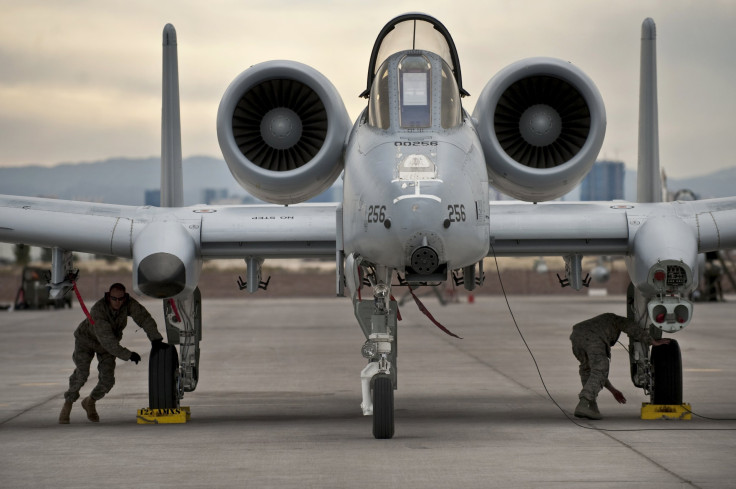Vladimir Putin's Russian Military And ISIS Saved US A-10 Aircraft: Air Force General

A top U.S. official said Friday the resurgence of Russian military power in Eastern Europe and the rise of the Islamic State group in Iraq and Syria prompted the U.S. Air Force to reconsider retiring its aging A-10 Thunderbolt II jet, Defense News reported. The aircraft, which first took to the skies in the 1970s to blow up Soviet tanks in the Cold War, had been up for retirement beginning in 2015, but a lack of specialized aircraft that can hit enemy targets from close range gave it a reprieve.
“What happens is that life gets in the way of the perfect plan,” Air Force Vice Chief of Staff Gen. David Goldfein said in an exclusive interview to be broadcast on "Defense News with Vago Muradian" Sunday. “So when we made the decision on retiring the A-10, we made those decisions prior to ISIL, we were not in Iraq, we were coming out of Afghanistan to a large extent, we didn’t have a resurgent Russia," the general said, using another name for the terrorist group, aka ISIS.
Adding to Air Force woes was the delay of the military's multirole F-35 Lightning II stealth jet, which was supposed to replace the A-10, affectionately known as the Warthog, and a range of other aircraft.
'Resurgent' Russia "forces" US to postpone A-10 retirement plan
https://t.co/yvW1QU4GoZ
#military #USAirForce pic.twitter.com/WlFguedFvB
— Sputnik (@SputnikInt) January 22, 2016While Goldfein said the Air Force made the final decision to keep the A-10 flying, it was in fact military backers in Congress, led by Sen. John. McCain, R-Ariz., who ran an aggressive campaign to stop the Air Force, which had argued to get rid of the aircraft during each budget cycle. It wanted to retrain A-10 aircraft mechanics to work on the F-35.
"With growing global chaos and turmoil on the rise, we simply cannot afford to prematurely retire the best close-air support weapon in our arsenal without fielding a proper replacement," McCain said in a Jan. 13 statement. "When the Obama administration submits its 2017 budget request in the coming weeks, I hope it will follow through on its plan to keep the A-10 flying so that it can continue to protect American troops, many still serving in harm’s way."
Since being saved, the A-10 has been deployed to Eastern Europe to thwart Russian aggression and has hit Islamic State targets in Iraq and Syria. The major advantage of the heavily armored aircraft is it can fly slowly and close to the ground, allowing it to hit accurately small enemy targets in built-up urban environments and avoid civilian casualties.
© Copyright IBTimes 2024. All rights reserved.






















